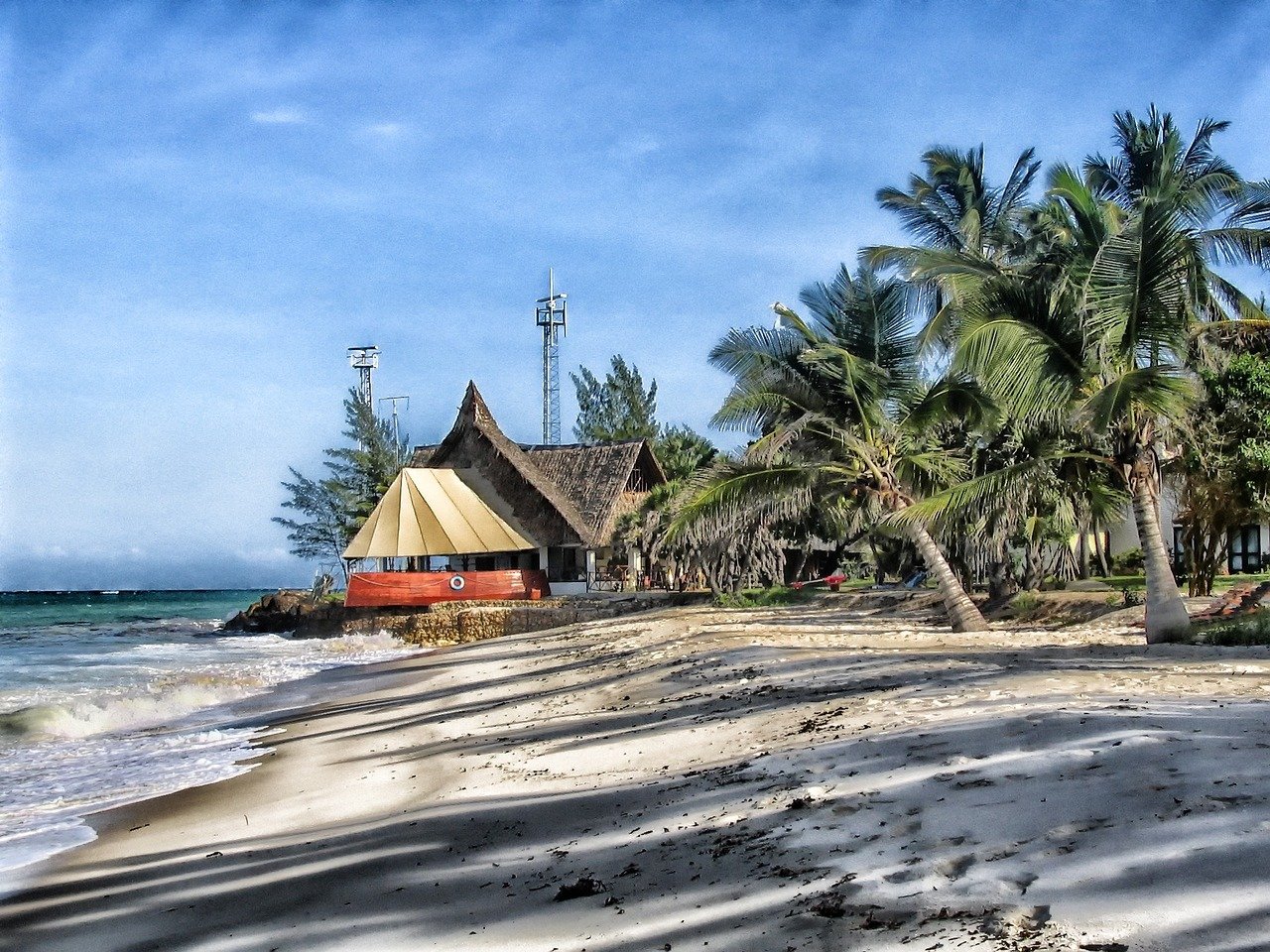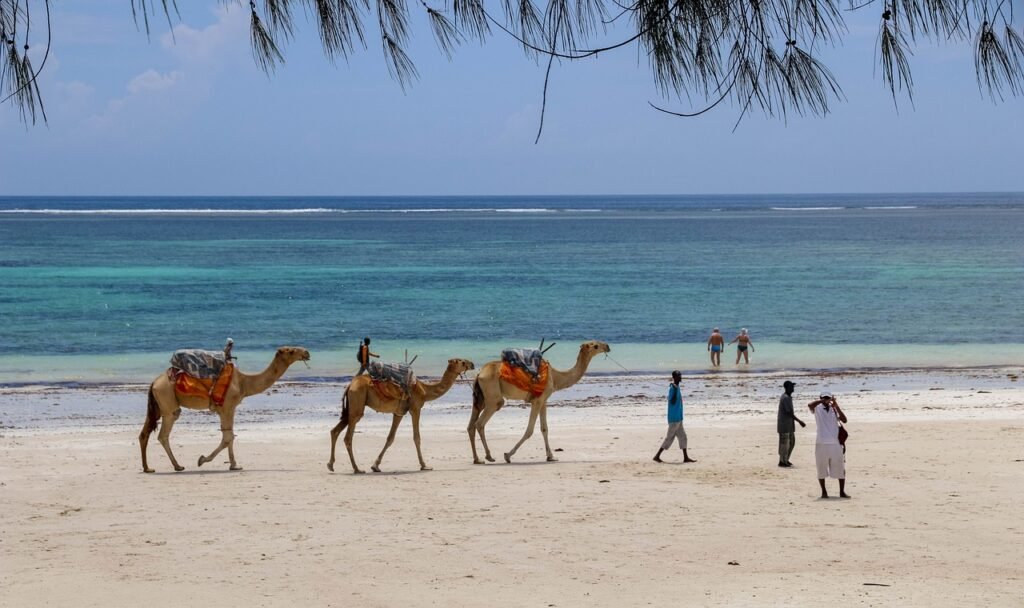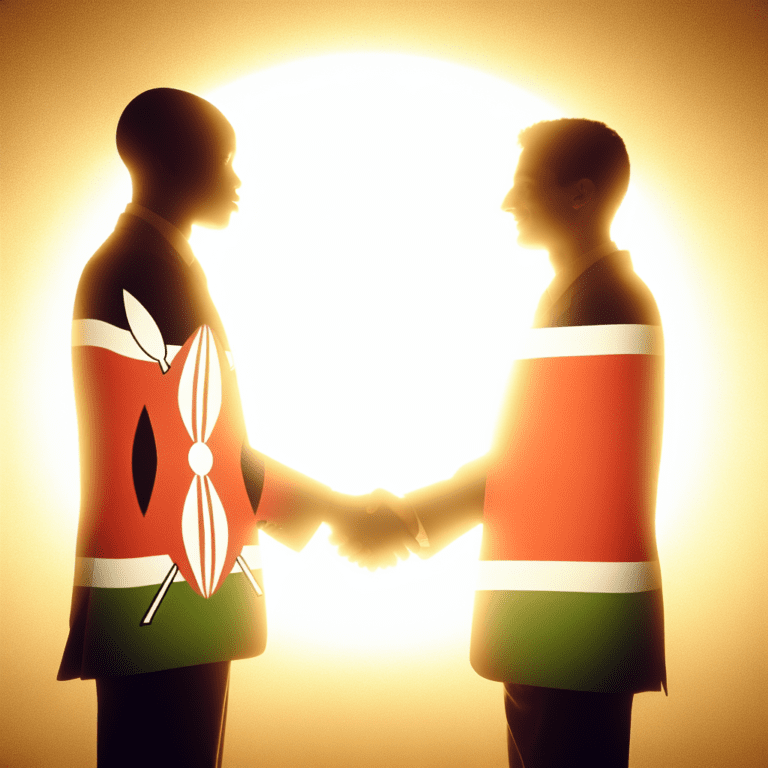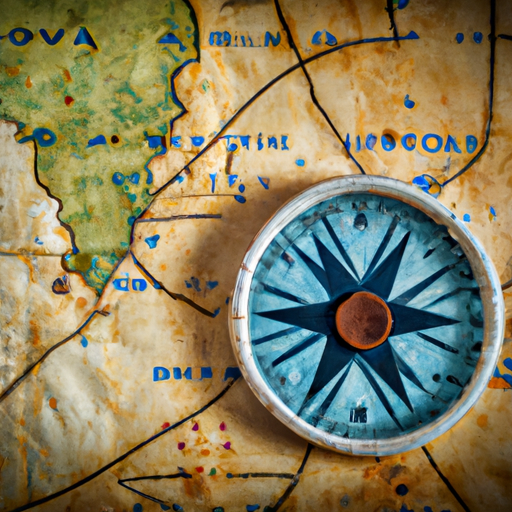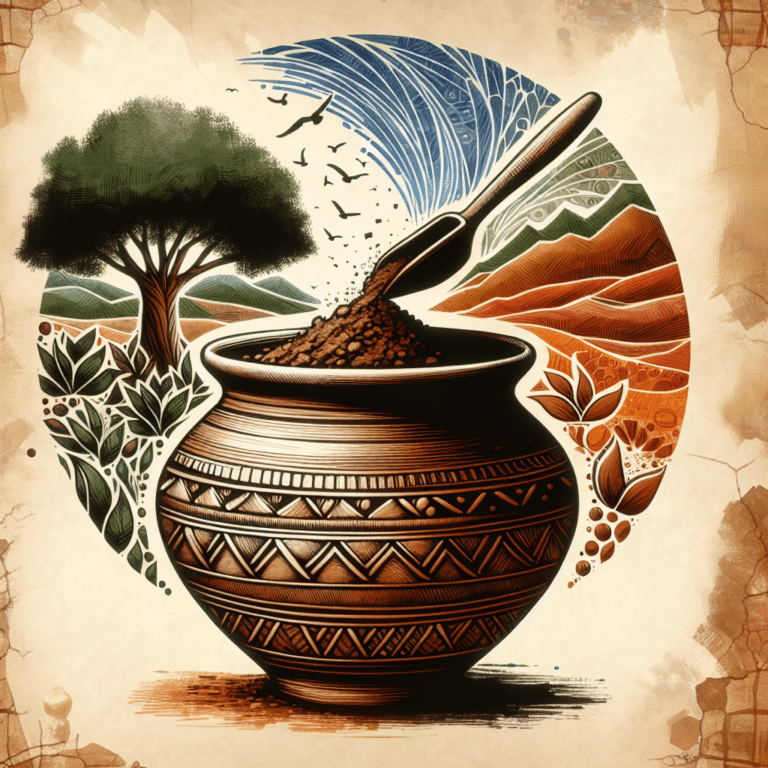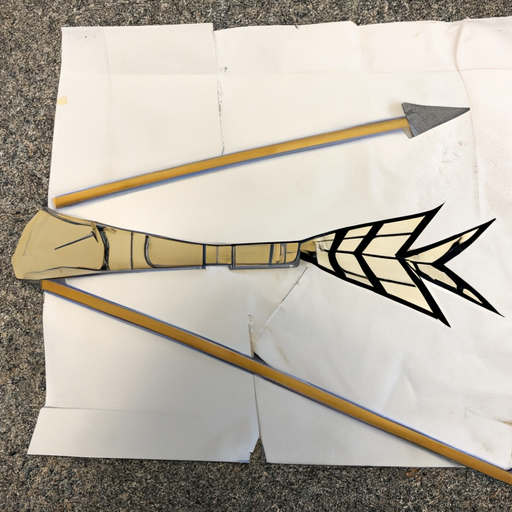What Was Kenya’s Role In The Arab And Swahili Trade Networks?
In this article, we will explore the fascinating history of Kenya’s involvement in the Arab and Swahili trade networks. From its strategic location on the eastern coast of Africa to its rich cultural heritage, Kenya has played a significant role in the exchange of goods, ideas, and cultures. Join us as we uncover the secrets of Kenya’s past and discover how it has shaped the vibrant trade networks of the region.
Kenya’s Location and Geography
Kenya is a country located in East Africa, bordered by Tanzania to the south, Uganda to the west, South Sudan to the northwest, Ethiopia to the north, and Somalia to the northeast. It has a diverse landscape, ranging from coastal areas along the Indian Ocean to the highlands and plateaus in the interior. This varied geography has played a significant role in shaping Kenya’s position in the Arab and Swahili trade networks.
Position along the Indian Ocean
Kenya’s long coastline along the Indian Ocean made it an ideal location for trade with the Arab and Swahili networks. The ports of Mombasa and Malindi became major trading hubs, connecting Africa to the rest of the Indian Ocean world. Its strategic location allowed it to serve as a gateway for goods and ideas flowing between different regions.
Coastal and inland regions
Kenya’s coastal regions, especially the Swahili coast, became centers of trade and cultural exchange. The cities of Lamu, Kilwa, and Zanzibar, among others, thrived as cosmopolitan trading centers. Inland, areas such as the Great Rift Valley and Lake Victoria region also participated in trade, though to a lesser extent. The diverse geography of Kenya allowed for the exchange of goods and commodities from both the coast and the interior.
Arab Trade Network
Historical background
The Arab trade network had its roots in ancient times, with traders from Arabia and the Red Sea region establishing routes along the coast of East Africa. As early as the 1st century CE, Arab merchants began sailing across the Indian Ocean in search of goods such as spices, gold, and ivory. Over time, these traders played a crucial role in shaping the trade networks of the region.
Establishment of Arab trade routes
Arab trade routes gradually expanded as the demand for goods from East Africa grew. These routes connected the Arabian Peninsula, the Red Sea, and the Swahili coast, with traders establishing economic and cultural ties along the way. The establishment of these trade routes brought increased prosperity to the coastal regions of Kenya.
Kenya’s position within the network
Kenya’s position along the coast of the Indian Ocean made it a vital link in the Arab trade network. The ports of Mombasa and Malindi served as major trading centers, attracting merchants from Arabia, Persia, and other regions. Kenyan traders played a crucial role as intermediaries, facilitating the exchange of goods between traders from different parts of the network.
Trade goods and commodities
The Arab trade network brought a wide range of goods and commodities to Kenya. Spices such as cloves, cinnamon, and nutmeg were highly sought after, as were precious stones, gold, and ivory. Kenya, with its abundant natural resources, was able to supply these goods, making it an attractive trading partner within the network.
Cultural exchange and intermarriage
The Arab trade network not only facilitated the exchange of goods but also led to the blending of cultures. Arab traders brought their ideas, customs, and religious beliefs, particularly Islam, to the Swahili coast of Kenya. This cultural exchange influenced the language, architecture, and social practices of coastal communities. Intermarriage between Arabs and Africans further contributed to the diversity and richness of Kenya’s cultural heritage.
Swahili Trade Network
Development of the Swahili coast
The Swahili coast of Kenya developed as a distinct trading zone influenced by the Arab trade network. This coast, stretching from present-day Somalia to Mozambique, saw the rise of vibrant city-states that thrived on commerce. The Swahili people, a blend of African, Arab, and Persian influences, played a significant role in the development of this trade network.
Trade routes and connections
The Swahili trade network encompassed both maritime and overland routes, connecting the Swahili coast with Arabia, Persia, India, and China. Coastal cities such as Mombasa, Lamu, and Kilwa served as crucial nodes along these routes, allowing for the exchange of goods and ideas.
Kenya’s role as a trading hub
Kenya, with its strategic location along the Swahili coast, became a key trading hub within the Swahili trade network. Its ports served as important entry points for goods coming from the Arab world, India, and China. This trade brought wealth and prosperity to the region, making it a flourishing center of commerce.
Swahili coastal city-states
The Swahili coast was dotted with prosperous city-states that emerged as centers of trade, politics, and culture. Cities such as Mombasa, Malindi, and Lamu grew in importance, attracting merchants and scholars from different parts of the world. These city-states developed their own unique governance systems and architectural styles, leaving a lasting impact on the region’s history.
Influence on language and culture
The Swahili trade network had a profound influence on language and culture in Kenya. The Swahili language, which originated as a blend of Bantu languages and Arabic, became a lingua franca for trade and communication. Arabic influenced Swahili vocabulary, and the Swahili script itself was adapted from Arabic. The cultural exchange between the Swahili people and traders from different regions contributed to the rich tapestry of Kenyan society.
Indian Ocean Trade Routes
Maritime routes and navigation
The Indian Ocean trade routes were primarily maritime, relying on winds and ocean currents for navigation. Mariners used monsoon winds to travel from Africa to India, Arabia, and the Far East. This reliance on wind patterns and celestial navigation techniques allowed traders to traverse the vast expanse of the Indian Ocean.
Kenya’s strategic location
Kenya’s strategic location along the Indian Ocean made it a crucial waypoint along the maritime trade routes. Traders sailing from Arabia and Persia to India or China would often make a stop at Kenyan ports, seeking fresh supplies and restocking their ships.
Trade with India, Persia, and China
Kenya, through its participation in the Indian Ocean trade routes, engaged in commerce with distant lands. Indian goods such as textiles, spices, and gemstones found a market in Kenya, while Kenyan goods like ivory, gold, and agricultural produce were sought after in India, Persia, and China.
Exchange of goods and ideas
The Indian Ocean trade routes facilitated the exchange of not just goods but also ideas and cultural practices. Traders from different regions interacted, sharing their knowledge, beliefs, and technologies. This cultural exchange enriched the societies along the trade routes, including Kenya.
Importance of trade winds
Trade winds played a crucial role in the Indian Ocean trade routes, shaping the patterns of commerce. The monsoon winds, which blew predictably during specific times of the year, allowed for the regular movement of ships across the ocean. Traders relied on these winds to transport their goods efficiently, contributing to the growth of trade networks in which Kenya played a significant part.
Historical Significance
Economic impact of trade
The Arab and Swahili trade networks brought about significant economic changes in Kenya. The trade of goods such as spices, precious stones, and gold resulted in wealth accumulation and economic prosperity along the coast. The infusion of trade commodities increased the availability of luxury goods and enhanced the living standards of the local population.
Political and social changes
The trade networks also had profound political and social impacts on Kenya. The wealth generated from trade allowed for the emergence of powerful city-states along the coast, each with its own ruling elite. These city-states engaged in complex trade relationships, forming alliances and rivalries that shaped the politics of the region. Socially, the intermingling of cultures and religions led to the formation of new identities and social structures.
Formation of coastal city-states
The Arab and Swahili trade networks contributed to the rise of vibrant city-states along the Kenyan coast. These city-states, such as Kilwa, Mombasa, and Malindi, flourished as economic and cultural centers. They developed their own governance systems and architectural styles, leaving behind impressive ruins and historical sites that illustrate the prosperity and influence of the time.
Involvement of Arab and Persian merchants
The Arab and Persian merchants who participated in the trade networks played a significant role in shaping Kenya’s history. They brought with them not only goods but also religious beliefs and cultural practices, such as Islam. These merchants established close relationships with the local population, leading to intermarriage and the blending of traditions.
Role of local Kenyan traders
Local Kenyan traders were integral to the functioning of the trade networks. They acted as intermediaries, facilitating the exchange of goods between foreign traders and the local population. Their knowledge of local resources and trade routes made them invaluable in the commercial activities of the time.
Trade Goods and Commodities
Spices and luxury goods
Spices were highly sought after in the Arab and Swahili trade networks, and Kenya played a crucial role in supplying these aromatic treasures. Cloves, cinnamon, pepper, and nutmeg were among the prized commodities that merchants from all over the world came to acquire. These spices not only added flavor to food but also had medicinal and preservative properties.
Gold, ivory, and precious stones
Kenya’s abundant natural resources made it a significant supplier of valuable commodities such as gold, ivory, and precious stones. These goods were in high demand in the trade networks, as they represented wealth and luxury. The Swahili coast became known for its intricate goldwork and ivory carvings, which were traded far and wide.
Slavery and the slave trade
Sadly, the trade networks also facilitated the transatlantic slave trade, with Kenya being a source of slaves. Slavery had long been a part of East African societies, but the demand for labor increased dramatically with the arrival of European colonial powers. Slaves were captured from the interior regions of Kenya and sold to Arab and European traders, who transported them to the Americas.
Maritime trade routes
Kenya’s location along the Indian Ocean trade routes, both Arab and Swahili, made it a hub for maritime commerce. Ships carrying goods from India, Persia, and China would stop at Kenyan ports, exchanging their cargoes for African commodities. This maritime trade network was vital in facilitating the movement of goods across vast distances.
Agricultural produce and livestock
In addition to luxury goods, Kenya supplied agricultural produce and livestock to the trade networks. The fertile lands of the highlands and coastal regions allowed for the cultivation of crops such as coffee, tea, and spices, which were in demand elsewhere. Livestock, particularly cattle, sheep, and goats, were also traded, providing resources for both food and material goods.
Cultural Exchange
Religious influence (Islam)
The Arab and Swahili trade networks brought Islam to the Swahili coast, introducing a new religion that had a lasting impact on Kenya’s culture. Arab and Persian traders established mosques and Islamic schools, spreading their faith to the local population. Today, Islam is one of the major religions in Kenya, with a significant number of Kenyans identifying as Muslims.
Arabic and Swahili languages
The trade networks facilitated the exchange of languages, with Arabic and Swahili becoming intertwined. Arabic, introduced by Arab traders, influenced the Swahili language, resulting in the development of a unique blend of Bantu languages and Arabic vocabulary. Swahili became a lingua franca for trade and communication, allowing for easier interaction among traders from different regions.
Architecture and urban development
The influence of the trade networks can be seen in the architectural styles of the Swahili coast. The cities and towns along the coast, such as Lamu and Mombasa, feature distinct Swahili architecture, characterized by intricate carvings, coral stone structures, and rooftop terraces. These architectural elements reflect the fusion of African, Arab, and Persian influences.
Intercultural marriages and relationships
The trade networks also gave rise to intercultural marriages and relationships, as traders from different regions formed connections with the local population. These unions resulted in the mixing of cultural practices, traditions, and even physical features. Today, many Kenyans can trace their ancestry back to Arab or Persian origins, showcasing the lasting impact of these relationships.
Food and culinary influences
The trade networks brought new culinary influences to Kenya, enriching its cuisine. Arabic spices such as cardamom and cumin made their way into local dishes, adding depth of flavor. The techniques and ingredients introduced by foreign traders blended with traditional African cooking methods, resulting in a unique gastronomic fusion that is still enjoyed today.
Decline and Legacy
European colonialism and its impacts
The arrival of European colonial powers, particularly the Portuguese in the 15th century, disrupted the existing trade networks and brought about significant changes in Kenya. The Portuguese aimed to control the lucrative trade routes and impose their influence, which led to conflicts and a decline in the influence of the Arab and Swahili networks. European colonialism marked a new era in Kenya’s history, with its own trade patterns and systems being imposed.
Shift in global trade routes
With the decline of the Arab and Swahili trade networks, the balance of global trade shifted to new routes and regions. European powers, through colonization, established their own trade networks that connected Africa to other parts of the world. This shift had far-reaching consequences for Kenya’s economy and its role in international trade.
Impact on Swahili and Arab communities
The decline of the trade networks resulted in significant changes for the Swahili and Arab communities in Kenya. The disruption of trade routes and the arrival of European powers weakened the pre-existing economic and political structures. Arab and Swahili communities had to adapt to new circumstances and find alternative means of livelihood.
Modern-day cultural heritage
Despite the changes brought about by colonialism, the legacy of the Arab and Swahili trade networks can still be seen in Kenya today. The Swahili coast, with its rich architectural heritage, continues to attract visitors interested in exploring its history. Traditional practices, such as dhow sailing and Swahili music, are actively preserved and celebrated, ensuring that the cultural heritage of the trade networks remains alive.
Tourism and preservation efforts
Tourism plays a vital role in preserving and promoting the cultural heritage of the Arab and Swahili trade networks in Kenya. Visitors from around the world come to experience the rich history, explore ancient ruins, and immerse themselves in the vibrant coastal culture. Preservation efforts, both by the government and local communities, aim to safeguard the architectural, linguistic, and cultural legacies for future generations to appreciate.
Swahili Language and Identity
Role of trade networks in language evolution
The Arab and Swahili trade networks played a crucial role in the evolution of the Swahili language. Through trade and cultural exchange, Arabic vocabulary and linguistic influences became integrated into Swahili. This linguistic fusion laid the foundation for the emergence of Swahili as a distinct language.
Arabic loanwords and linguistic influences
Arabic loanwords and linguistic influences are abundant in the Swahili language. Words related to trade, religion, and everyday life were adopted from Arabic and became an integral part of Swahili vocabulary. This linguistic connection to the trade networks further underscores the intertwined history of Kenya and the Arab world.
Importance of Swahili as a lingua franca
Swahili’s development as a lingua franca in the region can be attributed to the trade networks. As traders from different regions interacted and conducted business, a common language was necessary for communication. Swahili, with its Arabic influences and widespread usage, became a bridge for linguistic understanding among diverse communities.
Identity formation and cultural pride
The Swahili language and its connection to the trade networks have contributed to the formation of a distinct cultural identity in Kenya. Swahili-speaking communities share a sense of pride in their heritage and language, which serves as a unifying force. The cultural exchanges and intermingling of traditions fostered a unique Swahili identity that endures to this day.
Swahili literature and arts
The trade networks also played a role in the development of Swahili literature and arts. Through the exchange of ideas and the introduction of Arabic script, Swahili literature began to flourish. Epic poems, known as “Swahili epics,” and other written works emerged, showcasing the literary talents of the Swahili-speaking communities. The arts, including music, dance, and visual arts, also draw inspiration from the trade networks, reflecting their influence on Swahili culture.
Archaeological Discoveries
Ruins and historical sites in coastal Kenya
Coastal Kenya is adorned with ruins and historical sites that bear witness to the vibrant trade networks of the past. Ancient city-states, such as Gedi and Manda, offer glimpses into the architectural grandeur and urban life of the time. The remains of forts, trading posts, and tombs are scattered along the coastline, waiting to be explored and admired.
Expeditions and research
Archaeological expeditions and research have played a crucial role in uncovering Kenya’s trade-related heritage. Archaeologists, historians, and scholars have dedicated their efforts to excavating sites, conducting surveys, and analyzing artifacts. These endeavors have provided valuable insights into the trade practices, cultural exchanges, and historical significance of the Arab and Swahili trade networks.
Trade-related artifacts and findings
Trade-related artifacts such as pottery, beads, coins, and jewelry have been unearthed in archaeological excavations. These objects provide tangible evidence of the trade networks and shed light on the types of goods exchanged during that time. The conservation and preservation of these artifacts are vital for understanding Kenya’s trade history and promoting further research.
Importance of preserving archaeological heritage
Preserving Kenya’s archaeological heritage is crucial for understanding its past and ensuring its legacy for future generations. By safeguarding ruins, artifacts, and historical sites, Kenya can continue to educate and inspire people about its rich trade history. Preservation efforts also contribute to tourism and economic development, allowing visitors to experience the wonders of the country’s ancient trade networks.
Insights into trade practices
Archaeological discoveries have provided valuable insights into the trade practices of the Arab and Swahili networks. Through the analysis of trade-related artifacts, researchers have been able to piece together information about trade routes, goods exchanged, and even the social dynamics of the time. These insights help paint a more comprehensive picture of Kenya’s role in the trade networks and its broader impact on the region.
In conclusion, Kenya’s role in the Arab and Swahili trade networks was significant and far-reaching. Its strategic location along the Indian Ocean, diverse geography, and participation in the trade networks brought about economic prosperity, cultural exchanges, and the formation of distinct identities. The trade of goods, language evolution, and archaeological discoveries all contribute to the understanding and appreciation of Kenya’s rich trade history. Today, the legacy of these networks can still be seen in Kenya’s cultural heritage, tourism industry, and continued pride in its Swahili language and identity.

